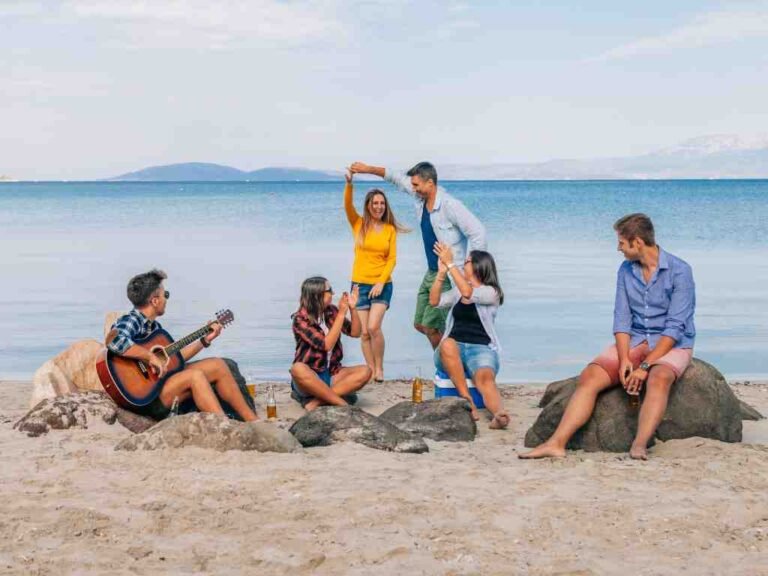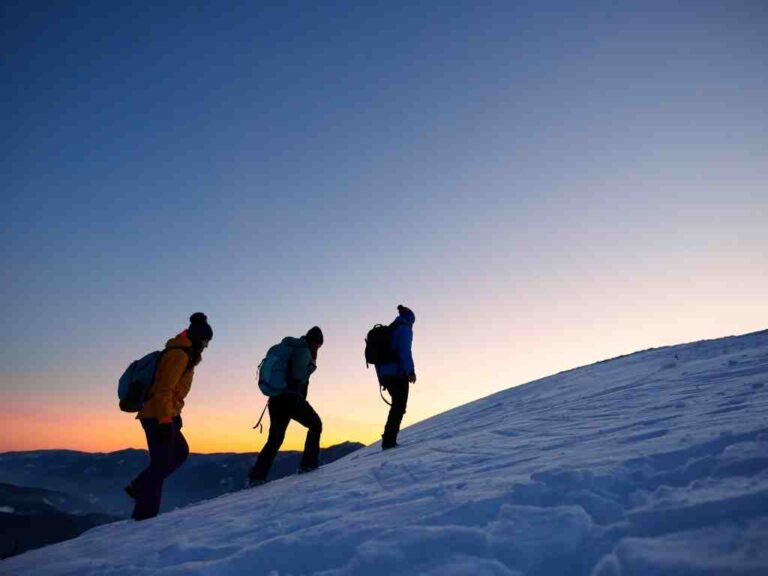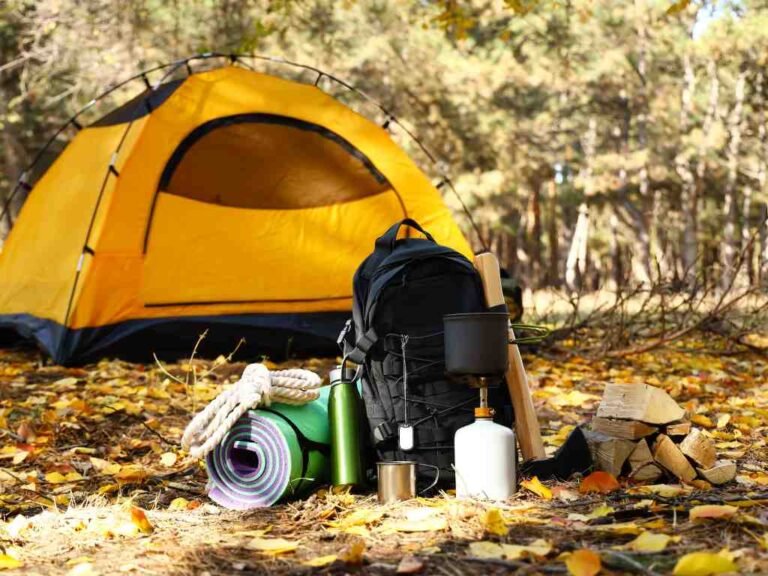Introduction

When it comes to embarking on a backpacking adventure, having a comprehensive gear checklist is not just an option; it is an essential tool for ensuring a successful and enjoyable experience. A well-structured checklist allows backpackers to prepare adequately for the journey ahead, addressing critical factors such as safety, comfort, and overall enjoyment on the trail. In the realm of outdoor adventures, preparation is key, and a focused gear list serves as a roadmap to achieving that goal.
The unpredictable nature of the outdoors necessitates that backpackers take into account a variety of elements that can influence their experience. Seasonal changes play a significant role; for instance, winter excursions require different clothing and gear compared to trips taken during the summer months. Similarly, the type of terrain encountered—from rugged mountains to lush forests—dictates specific equipment requirements. For example, a journey through rocky landscapes may necessitate durable footwear and climbing gear, whereas a hike through flat terrains may afford more flexibility in gear choices.
Moreover, the duration of the trip will also impact the gear checklist. A weekend backpacking outing may only require the bare essentials, while an extended expedition might necessitate a more robust selection of items, including sleeping systems, cooking gear, and adequate food supplies. This variability in personal needs makes it crucial for each backpacker to customize their gear checklist based on these parameters, fostering heightened preparedness for their unique adventure.
In conclusion, the practice of developing a detailed gear checklist serves as an indispensable component of successful backpacking. By prioritizing preparation tailored to varying conditions, backpackers can significantly enhance their overall outdoor experience and mitigate potential risks.
Clothing Essentials: Dressing for the Elements
When preparing for a backpacking adventure, selecting appropriate clothing is crucial for ensuring comfort and safety throughout the journey. The principle of dressing in layers is fundamental for regulating body temperature, allowing you to adapt to varying weather conditions encountered along the trail. The foundational layer, often referred to as the base layer, should consist of moisture-wicking fabrics that draw sweat away from the skin. Fabrics such as merino wool or synthetic options like polyester provide effective moisture management, which helps maintain warmth and dryness during physical activities.
The middle layer serves as insulation, trapping warm air close to the body. Fleece jackets or insulated vests are popular choices, as they offer lightweight warmth without bulk. Depending on the climate, additional layers such as down or synthetic jackets may be advisable for colder conditions. Over these, an outer layer or shell provides protection against wind and rain. Waterproof and breathable materials like Gore-Tex are ideal for this purpose, as they allow perspiration to escape while preventing external moisture from penetrating.
In regions with unpredictable weather, it is advisable to pack versatile pieces that can be easily adjusted. For warm weather, consider lightweight shorts and long-sleeve shirts made from breathable materials that provide some protection from the sun. Conversely, when temperatures drop, long pants and thermal layers become essential. Additionally, accessories such as a hat, gloves, and a buff can enhance comfort. Packing efficiently is key; choose clothing that can be layered effectively and prioritize items that serve multiple functions to reduce weight. Ultimately, selecting the right clothing ensures you are prepared for the elements while maintaining the flexibility to engage in various activities on the trail.
Must-Have Cooking and Food Gear: Fueling Your Adventure
When embarking on a backpacking trip, the right cooking and food gear can significantly enhance your outdoor experience. First and foremost, a lightweight portable stove is an essential item in your gear checklist. These stoves are designed for efficiency, allowing you to boil water quickly for meals such as dehydrated soups or instant oatmeal. Options like canister stoves, alcohol stoves, or multi-fuel stoves offer portability and flexibility, ensuring that you can cook in various environments.
- 1. the burner base is an integrated high-bright aluminum alloy, light weight, high strength; honeycomb high-temperature aluminum alloy windproof net, polyethylene flame increases oxygen circulation, i…
- 2.Flame control: Adjustable control valve for fast maximum heat output all the way down to a simmer quickly and efficiently,Rated rate: 3000w.
- 3. Fire board specifications: 9.5 * 9.5CM (suitable for setting a 20CM diameter basin, suitable for 1~3 people),Compatible with any 7/16 thread single butane/butane-propane mixed fuel canisters (EN 41…
In addition to a stove, investing in suitable cookware is vital. Look for nesting pots and pans made from lightweight materials such as titanium or aluminum. A compact cooking set that includes a pot, lid, and a frying pan can provide you with versatility for different meal types. Remember to carry a reliable set of utensils, including a spatula and a multi-tool, which can simplify meal preparation.
- Best Money Ever Spent: The 9 pieces camping cookware kit includes 1 mini stove + 2 aluminum non-stick pots + 1 spoon + 1 fork + 1 knife + 1 stainless steel cup (16oz) + 1 sillicone insulated cup prote…
- Anti-slip & anti-heat handles: The anti-slip pot handles and the silicone cup protector are all anti-heat and can effectively protect your hands from injury. One Kit meets all your needs! You will def…
- Convenient & Incredibly Durable: The mini stove can be folded to save space. So do the handles on the pots. Build with non-toxic anodized aluminum and strong structure, each pot is solid and lightweig…
Food storage solutions should also be a priority in your packing list. Use resealable bags or vacuum-sealed containers to keep your meals organized and protected from moisture. Lightweight options such as energy bars, nuts, and dried fruits are excellent choices that are rich in nutrients while being easy to pack. When planning meals for multi-day expeditions, consider easy-to-cook options such as instant rice, pasta, or oatmeal, which take minimal time to prepare and require only water and heat.
Lastly, hydration is crucial during your adventure. Carrying a reliable water filtration system, such as filters or purification tablets, ensures that you can secure clean drinking water throughout your journey. Staying hydrated helps maintain energy levels and enhances overall endurance, which is essential for enjoying your backpacking experience.
- Removes Bacteria & Parasites: The Microfiltration Membrane Removes 99.999999% of Waterborne Bacteria (Including E. Coli and Salmonella), and 99.999% of Waterborne Parasites (Including Giardia and Cryp…
- Removes Microplastics: Removes the Smallest Microplastics Found in the Environment (Down to 1 Micron), and Reduces Turbidity Down to 0.2 Microns – Ideal for Hiking and Camping Essentials
- Rigorous Testing: All Claims Are Verified with Laboratories Using Standard Testing Protocols Set by the US EPA, NSF, ASTM for Water Purifiers
Safety and Navigation Gear: Staying Secure and On Track
Ensuring safety and effective navigation in the wilderness is vital for every backpacker. Among the fundamental tools that should be a part of your gear checklist are a reliable map and compass. While GPS devices have become popular, maps and compasses serve as fail-safe alternatives when electronic devices fail due to low battery or signal loss. Familiarizing oneself with reading a topographical map and understanding the compass can enhance one’s confidence in navigating through unmarked territories.
GPS devices provide convenience and precision, offering real-time location tracking. However, reliance solely on technology may lead to pitfalls during a hike. Therefore, carrying a physical map along with a compass is an essential practice to ensure you can navigate safely and effectively, no matter the circumstances. Many experienced backpackers emphasize cross-referencing GPS data with a traditional map for a more comprehensive approach to navigation.
- Rugged GPS smartwatch is water-rated to 100 meters and thermal- and shock resistant with fiber-reinforced polymer case and scratch-resistant Corning Gorilla glass
- Battery life: up to 28 days in smartwatch mode; up to 30 hours in GPS mode
- Live the ultimate connected life with smart notifications and Connect IQ compatibility when paired with your compatible smartphone.
In addition to navigation tools, a well-stocked first-aid kit is crucial for addressing common injuries and emergencies that may occur while on the trail. A comprehensive first-aid kit can include items such as adhesive bandages, antiseptic wipes, gauze pads, and pain relief medication. Moreover, knowledge of basic first-aid practices equips individuals to handle injuries more effectively until professional help is reachable.
Emergency tools, including multi-tools and fire starters, add significant value to your backpacking gear. A multi-tool can serve various purposes, from making quick repairs to preparing food, while fire starters assist in building a campfire, essential for warmth and cooking. It is advisable to practice using these tools before heading out, as familiarity can improve response times in emergency situations.
Risk management is another vital strategy for safety. Preparing for changing weather conditions, assessing trail hazards, and having an emergency plan can significantly reduce risks during your adventure. Remaining adaptable and vigilant can help you navigate unforeseen challenges more effectively.









